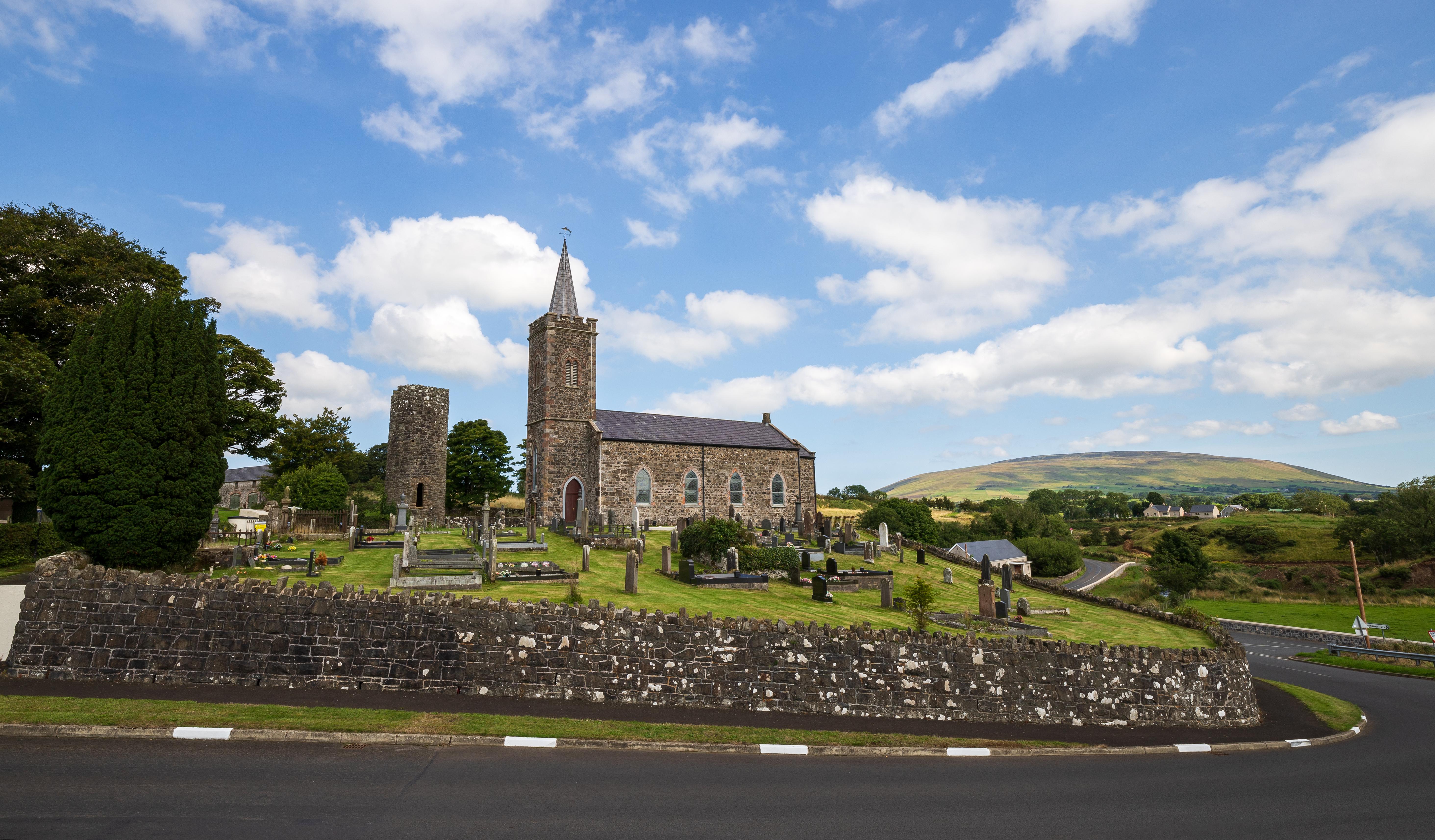Drumtullagh Parish Church
Ballymoney , County Antrim
The church was designed by famous architect Charles Lanyon, and is an excellent source of information, through parish records, for anyone tracing their family tree.

Set in a landscape steeped in myth and legend, the site of St Patrick’s church stands testament to the long tradition of Christianity in the land of saints and scholars.
Armoy, County Antrim
Saint Patrick is the patron saint of Ireland and many places across the island are associated with him. He is said to have been brought to Ireland as a slave to tend sheep on the slopes of the majestic mountain of Slemish.
St Patrick’s Anglican church, located just outside of the picturesque village of Armoy in County Antrim; roughly about thirty miles as the crow flies from Slemish. Set in a landscape steeped in myth and legend, the site of St Patrick’s church stands testament to the long tradition of Christianity in the land of saints and scholars. Nestled deep in the rolling hills with Knocklayde mountain rising in the distance.
Armoy or Oirthear mai in Irish means east of the plain and it was an important place in the territory of the Dalriada Kingdom established in the 5th century that encompassed the northeast of Ireland and the Scottish Isles. The Tripartite Life of Saint Patrick says a church was founded at this location in the 5th century by St Patrick’s disciple, Bishop Olcan.
The graveyard wall traces the line of the early Christian circular enclosure. During recent archaeological excavations a manmade tunnel known as a souterrain was discovered with evidence of an early medieval building also found beneath the present church. Many burials were uncovered, one of which included signs of leprosy.
The present church was constructed in 1820 of basalt rubble which the north coast of Antrim is famed for. It is a plain Gothic style church fronted by a square tower. At the top of the church spire, you can see a fish-shaped weathervane, undoubtedly a salmon, a reference to the nearby Bush river which was renowned for its salmon fishing. Inside, the east window has three separate lancets depicting the iconography of Faith, Hope and Charity, designed by the artist Henry Holiday, (1839-1927) during his time at the studio of James Powell & Sons, London.
St Patrick’s is famous for the ruin of its Irish round tower which was built during the 10th century. A monument unique to the island, there are only a few examples found outside of Ireland. No one knows what the original height of the tower was, but you can find similar types that stand as high as 130 feet. The tower would have stood as a beacon of Christianity all those years ago.
The views from St Patrick’s are beautiful and there are some fabulous grave markers for the taphophiles amongst you. A headstone in the graveyard is reputed to be connected to the Reverend Ralph Wilde who was a former rector of St Patrick's Church, the brother of Sir William Wilde, Oscar Wilde's father.
Whether visiting in winter or summer, Armoy is such an atmospheric and serene place for reflection. Except during the world famous Armoy road races, a high octane three-mile motor bike road race! St Patrick’s stands on a winding road that forms part of the circuit during the month of July. This part of the race is known of course as Church Corner.
Ballymoney , County Antrim
The church was designed by famous architect Charles Lanyon, and is an excellent source of information, through parish records, for anyone tracing their family tree.
Ballintoy, County Antrim
Visit Ballintoy church, perched on a hill above Ballintoy Harbor in one of the most scenic locations on the north Antrim coastline.
Kildollagh, County Derry
St Paul's is a living church with ancient roots; overlooking the river Bann, it is a beautiful Victorian church offering peace and tranquillity and is a well preserved fine example of the work of the famous Irish architect Joseph Welland.